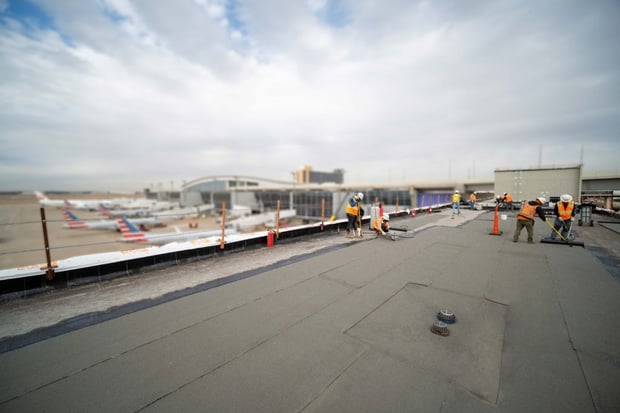 By Curt Liscum, RRC, RRO
By Curt Liscum, RRC, RRO
Senior Consultant
Almost half of the world’s population lives in an area of unhealthy air. “Smog” is a term coined in 1905 by a London, England physician as he described the result of a combination of smoke and fog. Today it refers to a mixture of pollutants made up mostly of ground level ozone.
In 1948, a California Institute of Technology chemist identified ozone as a component of Los Angeles smog. He went on to discover that nitrogen oxides from automotive exhausts and gaseous hydrocarbons from cars and oil refineries, exposed to sunlight, were key ingredients in the formation of ozone and photochemical smog.
Smog, or air pollution, is a silent killer present across the globe. The World Health Organization estimates about seven million people die every year from exposure to these fine particulates located in polluted air. The pollutant, which comes largely from automotive emissions and industrial facilities, leads to thousands of premature deaths worldwide because of a variety of respiratory illnesses. Depending on which scientist you believe, the condition is either getting better or worse, but what we know for sure is that it is not going away.
Plants improve air quality by absorbing carbon dioxide and releasing oxygen through photosynthesis. This natural smog fighting ability can be significantly hampered with the loss of plant life

Smog-reducing granule-surfaced modified bitumen membrane being installed at the Dallas-Fort Worth Airport courtesy of Soprema.
such as after a wildfire or major wind event like the August 2020 Derecho that impacted the Midwest. Estimates indicate that about 50 percent of the tree canopy was destroyed in my Iowa hometown area during the Derecho storm last August, which is anticipated to have a dramatic impact on air quality in our region for many years to come.
So, what does this have to do with roofing? How can your next roofing project help fight smog and air pollution? A Minnesota-based manufacturer has developed a granular material that can be used as a surfacing material for shingles and modified bitumen membranes. When exposed to the sun’s ultraviolet rays, the photocatalytic coating on this granular material breaks down smog particles (nitrogen oxides) into water-soluble ions that can be safely washed away with rain. The water-soluble ion is nitrate salt (NO3), which is a plant-usable salt that is important for plant growth and a main ingredient in most commercial fertilizers. By breaking the harmful particles down into fuel for plant growth, the surfacing provides a compounded benefit in boosting photosynthesis in plant life located around/near the building.
Lawrence Berkeley National Laboratory testing validated that photocatalytic materials used in smog-reducing granules can reduce smog and contribute to cleaner air. The photocatalytic activity is constant when exposed to ultraviolet light, so smog-reduction activity is a continuous process and does not lessen over the life of the roofing material.
Because these smog-reducing granules are a surfacing material applied to already time-tested membranes, roof system performance or longevity should be the same as products manufactured with “standard” granule surfacing materials. Additionally, these enhanced membranes can be installed using industry standard methods already employed by professional roofing contractors located across the country.
With the current industry turmoil and supply chain shortages, it is difficult to get a firm price comparison between standard material and material surfaced with the smog-reducing granules. It appears the upcharge per roll of modified bitumen membrane would be about 25 to 35 percent. This does not equate to an overall project increase of that amount, just an increase in the cost of one ply of multi-ply membrane of the roof assembly.
So how effective are the granules at reducing smog? According to industry studies, the average house with smog reducing granule-surfaced shingles has the capacity to reduce smog equivalent to the impact of 2 to 3 mature trees. A 100 square (10,000 SF) low-sloped roof with a smog reducing granule-surfaced modified bitumen membrane can have similar smog reducing capabilities as approximately 60 mature trees, which would lessen the impact of about 4,000 miles of driving.
Currently we were unable to find any mandated building or energy code requirements or any local, state, or federal incentives to install a roof with smog reducing capabilities. Just like reflectivity, thermal insulation, and storm water retention, it may only be a matter of time before smog reduction is included in this group of sustainable endeavors. For now, it is one of the sustainable or green options just starting to come of age.
As of the writing of this article, there is one shingle manufacturer and three modified bitumen manufacturers offering materials with this smog reducing surfacing. To find out more about the availability of products or how they can be incorporated into your next roofing project, please contact Benchmark.
